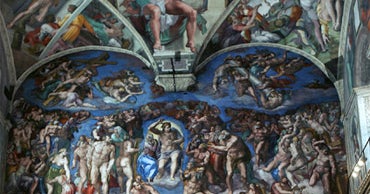As the appeal of the Vatican City continues to captivate millions worldwide, the influx of tourists brings with it a variety of unforeseen challenges, particularly concerning the preservation of its most revered sites. Amongst these challenges, the incessant accumulation of dust and pollen emerges as an underappreciated threat, one that poses significant risks to the integrity of both the Vatican’s interiors and exteriors.
The Sistine Chapel, with its awe-inspiring frescoes painted by Michelangelo, stands as a glaring example of how anthropogenic activities can compromise cultural heritage. Every day, an estimated 20,000 visitors traverse its hallowed halls, inadvertently contributing to an increase in particulate matter. Dust, which often comprises skin flakes, textile fibers, and even remnants from footwear, accumulates on delicate surfaces, potentially accelerating degradation of irreplaceable works of art.
Pollen, another seemingly innocuous element, further complicates the preservation narrative. Springtime visitors bring with them a multitude of allergens, which can adhere to surfaces and interact chemically with the paints and varnishes employed by historical artisans. This interaction may lead to unintended reactions, resulting in discoloration or erosion of the intricate details that define such artistic masterpieces.
The mechanisms for the degradation due to these particulates are multifaceted. Dust can act as an abrasive agent, wearing down surfaces over time, while the biochemical interactions induced by pollen can destabilize the very foundations of these artworks. Consequently, caretakers face the daunting task of balancing conservation efforts with the inescapable reality of public admiration.
Efforts to mitigate these threats must be multi-pronged. Enhanced filtration systems and regular cleaning protocols are crucial in controlling airborne particulates and preventing their settling on sensitive surfaces. Additionally, promoting awareness among visitors regarding the impact of their presence can foster more conscientious behavior in these sacred spaces, encouraging tourists to limit physical contact and adhere to guidelines aimed at preserving the sanctity of the chapel.
Moreover, the Vatican’s management could explore innovative technologies, such as using advanced air quality monitoring systems to gauge particulate levels in real-time and adjusting visitor capacities accordingly. These proactive measures could substantially diminish the deleterious impact of increasing tourist numbers.
In conclusion, while the allure of the Vatican remains undiminished, it is imperative to acknowledge the environmental repercussions posed by mass tourism. The delicate balance between accessibility and conservation must be navigated with foresight and responsibility. Only through a collective commitment to preserve these invaluable cultural treasures can future generations continue to marvel at the masterpieces that define the Vatican.
